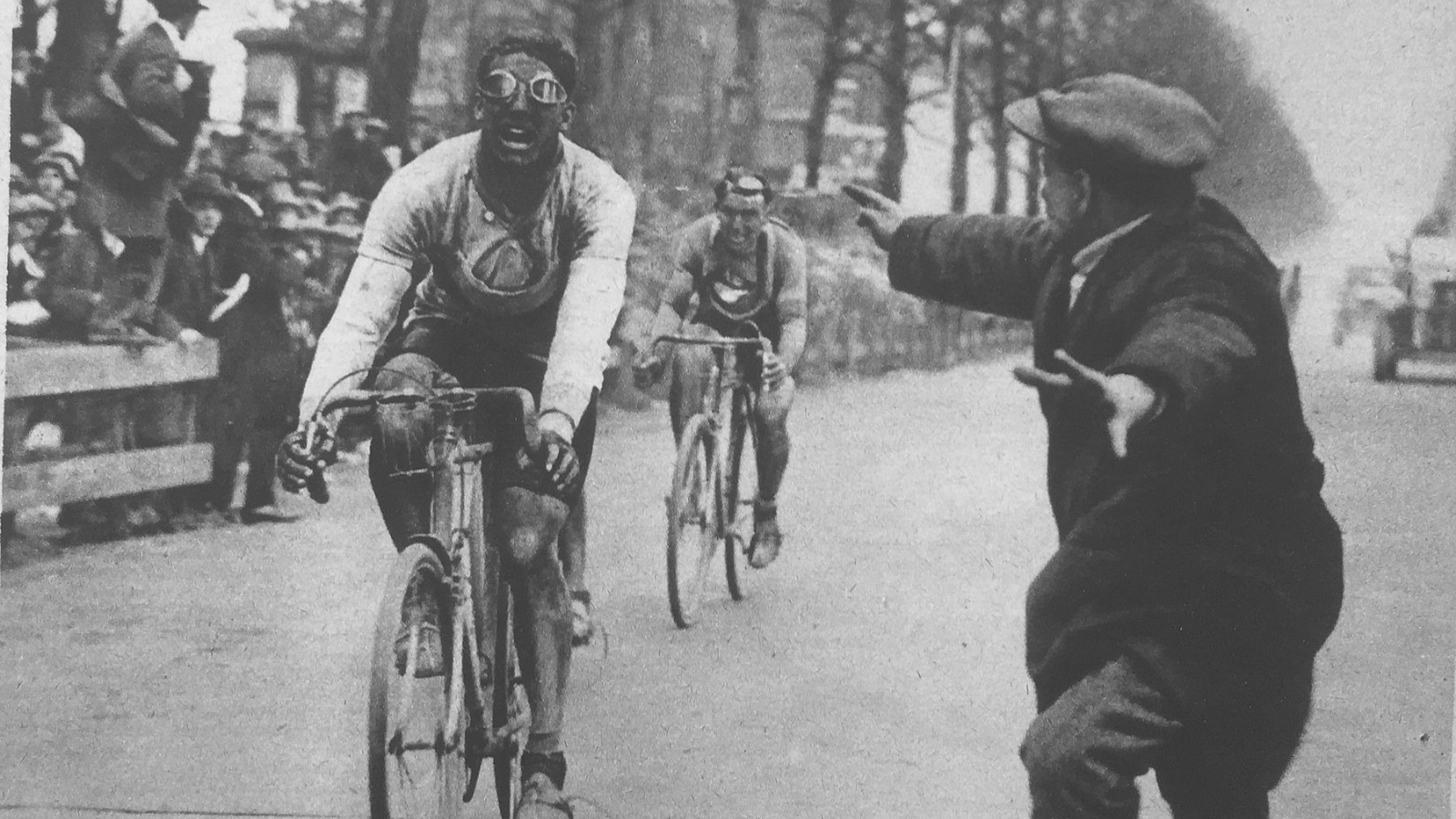André Leducq, the two-time Tour de France winner (1930 and 1932) claimed his first great triumph at Paris-Roubaix in 1928.
The race took place on the 8th April 1928.
89 riders departed in Le Vésinet but only 52 riders completed the 260 km long route.
The defining moment of the race happened in Arras, where defending champion Georges Ronsse rode away from the rest of the peloton. Charles Pélissier and Charles Meunier followed him. André Leducq and Gaston Rebry (the later three-time Paris-Roubaix winner from 1931, 1934 and 1935) joined later.
Then, Rebry and Pélissier dropped, and only three riders arrived at the avenue des Villas in Roubaix.
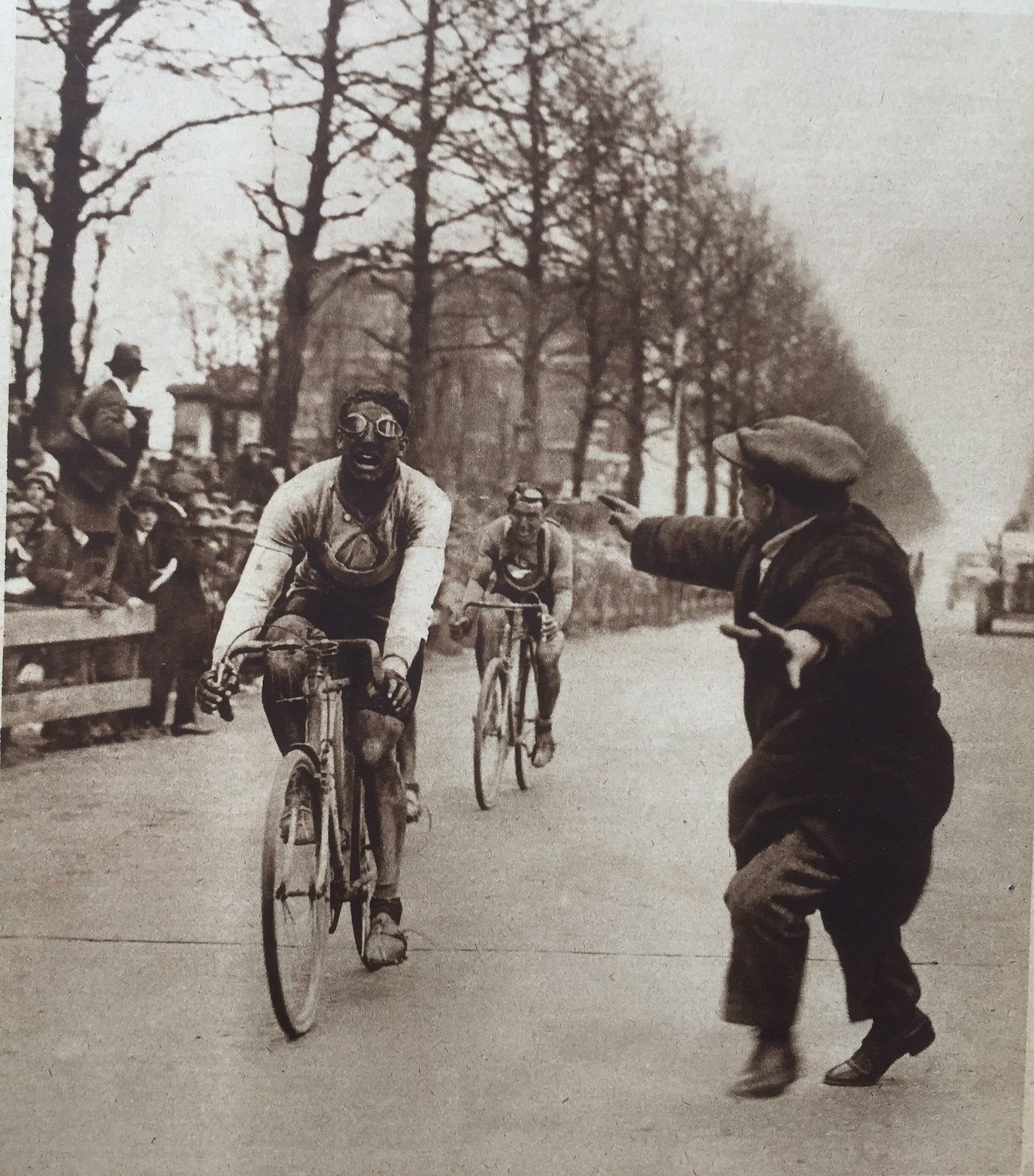
Meunier was a kind of an outsider (although he won the race next year), a dark horse, and Ronsse knowing nothing about his capabilities rather started a long sprint. Leducq followed and outsprinted him at 50m and won the race.
Paris-Roubaix is one of the most iconic and most popular road cycling races of the international professional cycling calendar. Started in 1896, one of the longest lasting big success in the history of road cycling races.
Read more on this topic on PelotonTales blog:
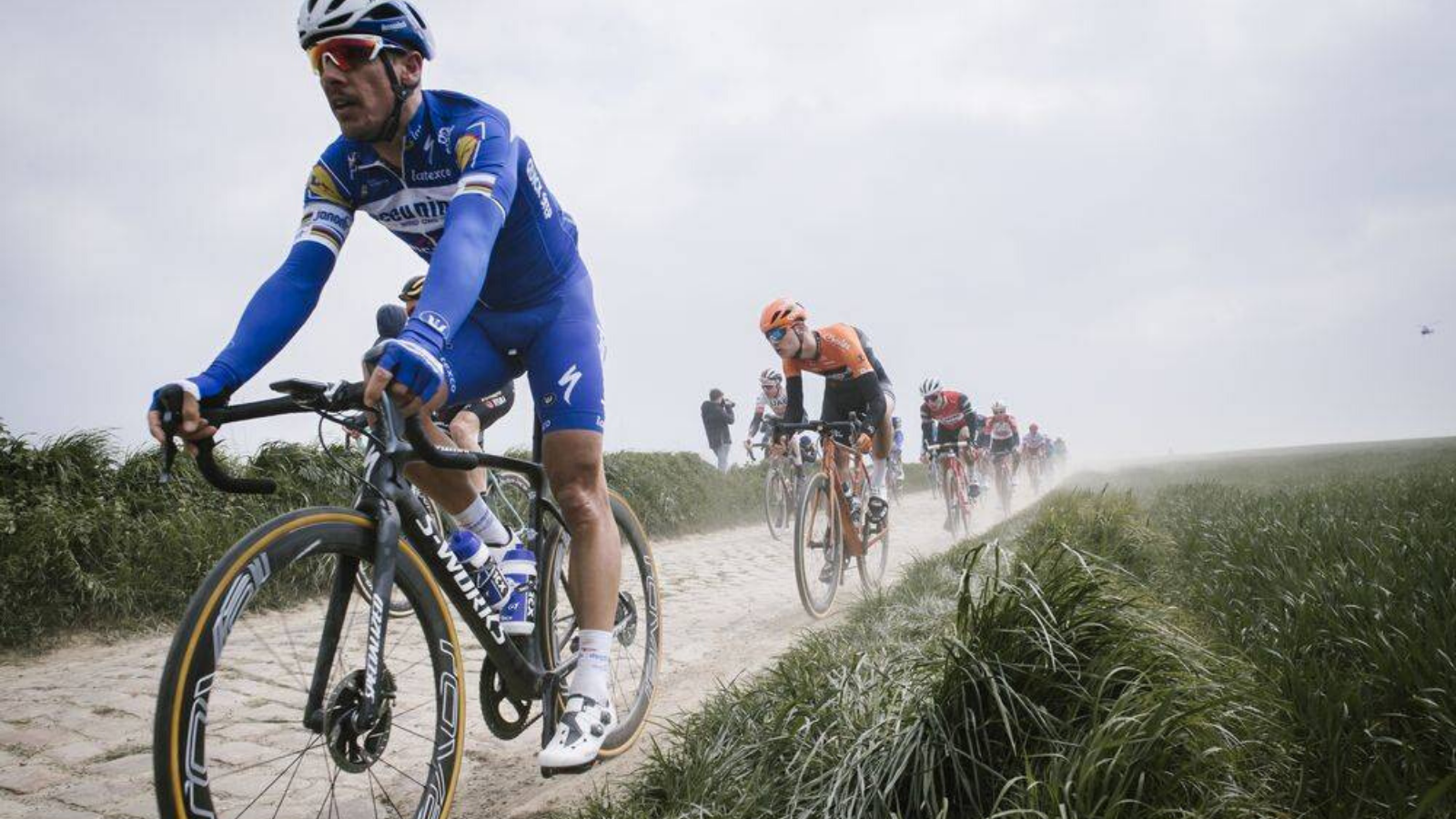
Rewatching the classics: Paris-Roubaix 2019
Without diminishing the victory of Philippe Gilbert (Deceuninck-Quick Step) at all, the secret protagonist of the last Paris-Roubaix in the 2010s was Wout van Aert (Jumbo-Visma)

Cycling Who’s Who: Hippolyte Aucouturier
Hippolyte Aucouturier, one of the most iconic riders in the early days of road cycling races, was born on the 17th October in 1876 in La Celle (France). Aucouturier won Paris-Roubaix among a rather chaotic circumstances in 1903. During the early years of the race, riders traditionally changed their bikes at the entrance of the … Read more
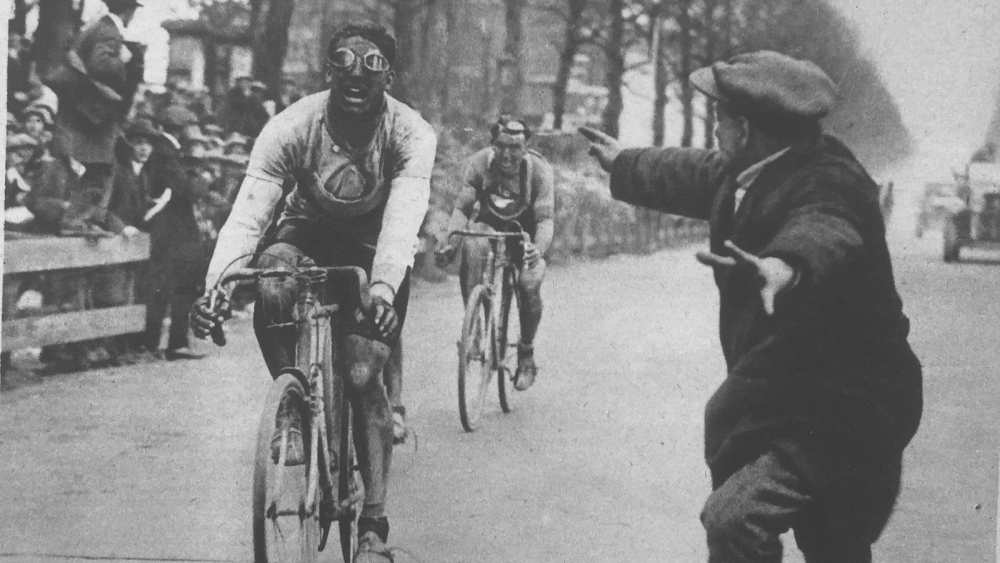
Iconic Paris-Roubaix images: André Leducq crossing the finish line in 1928
André Leducq, the two-time Tour de France winner (1930 and 1932) claimed his first great triumph at Paris-Roubaix in 1928. The race took place on the 8th April 1928. 89 riders departed in Le Vésinet but only 52 riders completed the 260 km long route. The defining moment of the race happened in Arras, where … Read more
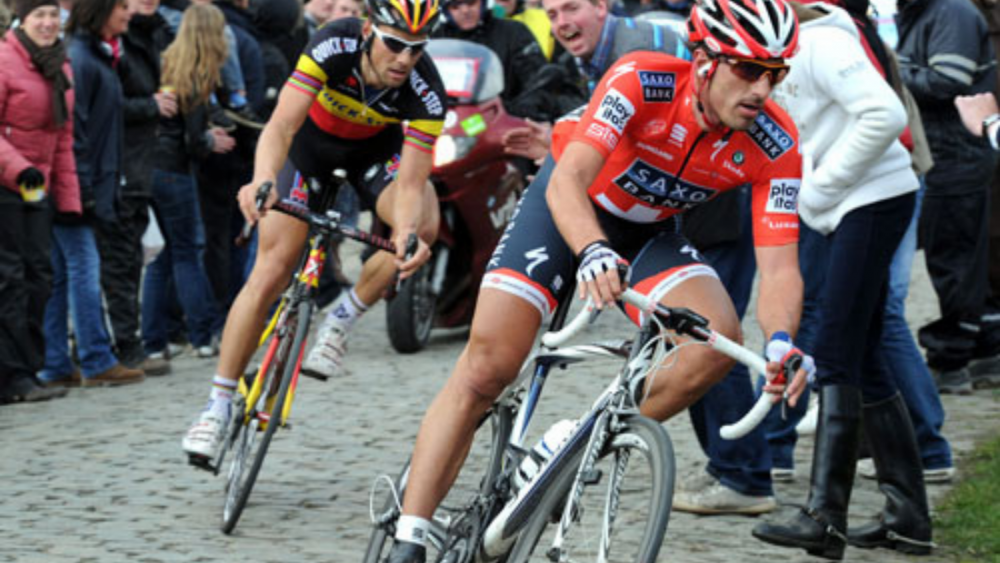
Double winners of Ronde van Vlaanderen and Paris-Roubaix
Winners of both Ronde van Vlaanderen and Paris-Roubaix in the same year: Henri Suter 1923 Romain Gijssels 1932 Gaston Rebry 1934 Raymond Impanis 1954 Fred De Bruyne 1957 Rik Van Looy 1962 Roger De Vlaeminck 1977 Peter van Petegem 2003 Tom Boonen 2005 Fabian Cancellara 2010 Tom Boonen Belgium 2012 Fabian Cancellara 2013 Mathieu van … Read more
Iconic Places: Arenberg
Almost 100 km far from the finish line of Paris-Roubaix, the 2,5 km long five-star cobbled sector can easily determinate the outcome of the race.
Paris-Roubaix, the “hell of the north” is often connected with epic, myth-creating bad weather conditions. Read more on this topic too:
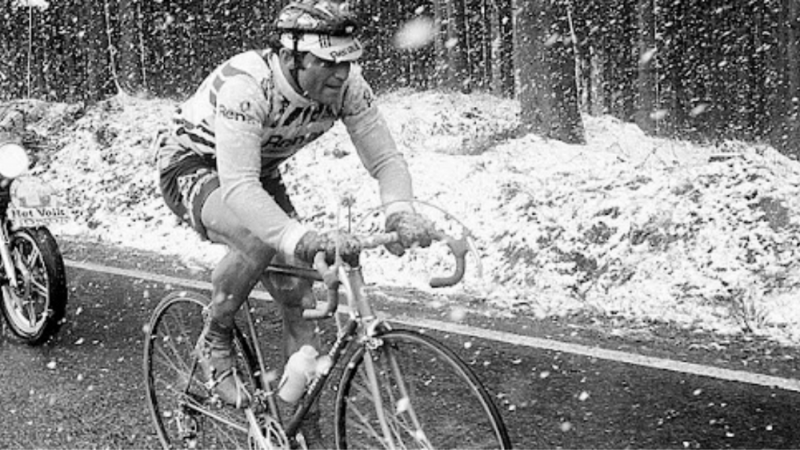
Bernard Hinault’s epic solo ride in the snow (Liège-Bastogne-Liège 1980)
On the afternoon of the 20th April 1980, while a little girl, called Anita Pethő ( the author of PelotonTales blog) was born in a small town in North-West Hungary, on the other part of Europe, in Belgium, Bernard Hinault delivered one of the most iconic victories in the history of the Monuments. Snow can … Read more
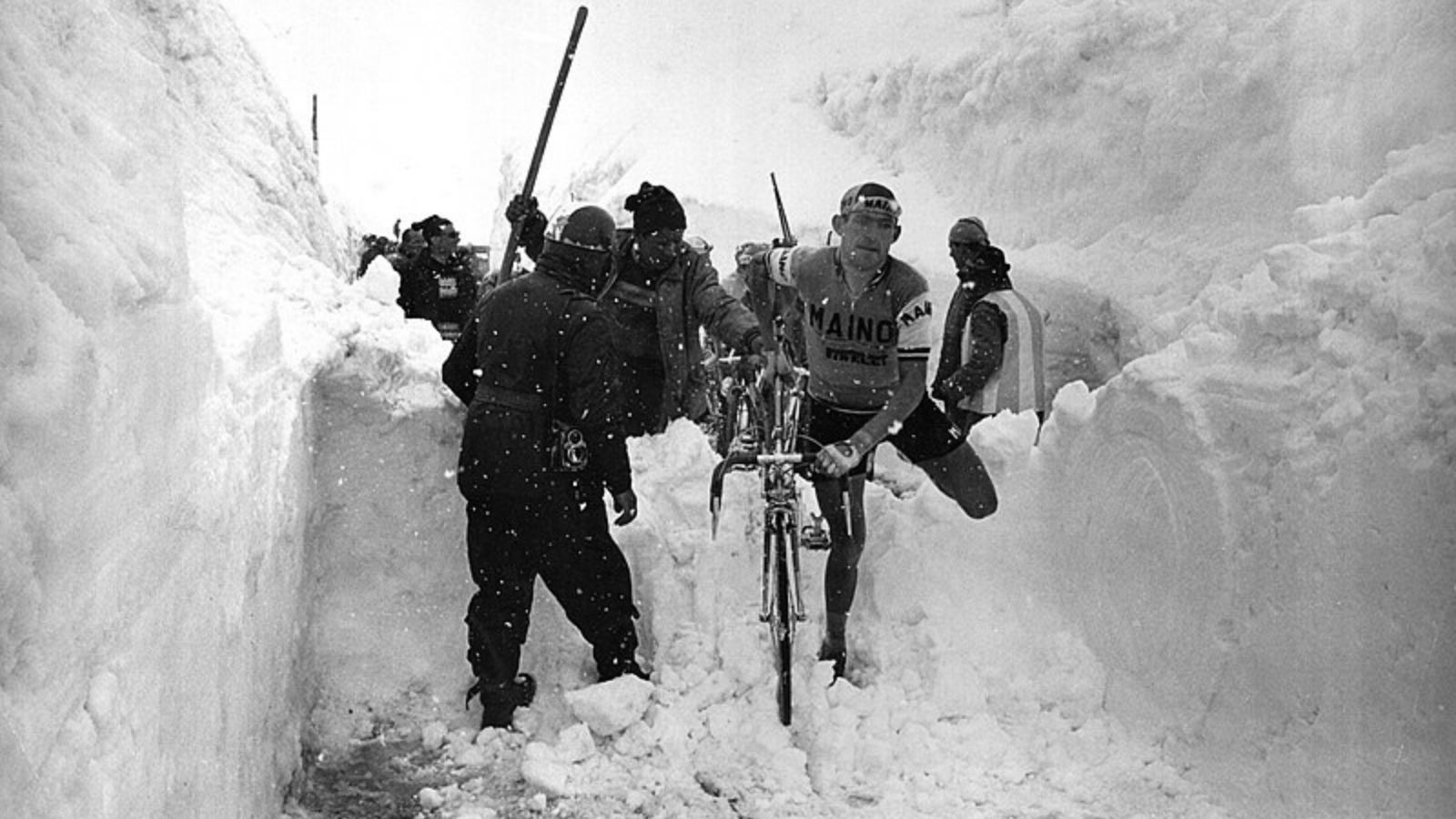
Aldo Moser on the Stelvio (Giro d’Italia 1965)
Passo dello Stelvio (Stelvio Pass) is a 2757 m high pass in the Alps. The ascent was introduced to the Giro d’Italia in 1953. That stage was won by Fausto Coppi
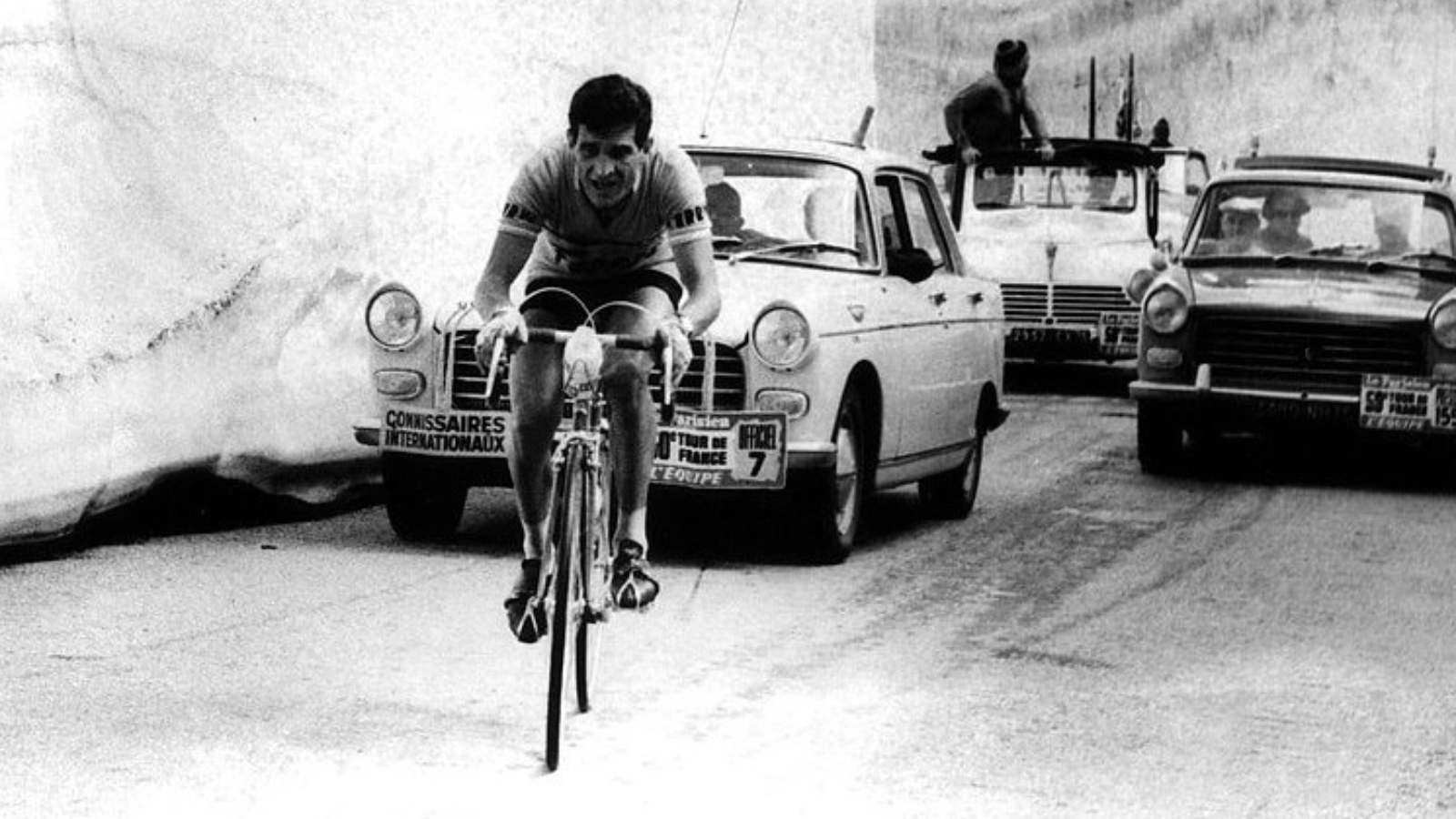
Fernando Manzaneque on the Col d’Iseran (Tour de France 1963)
Snow at the Tour de France? Yes, it happens sometimes, especially, when the race visits such high places like Col d’Iseran in the Alps. In the 16th stage of Tour de France 1963, the peloton visited the Alps. It was a 202 km long stage between Grenoble and Val d’Isere, including Col de la Croix … Read more
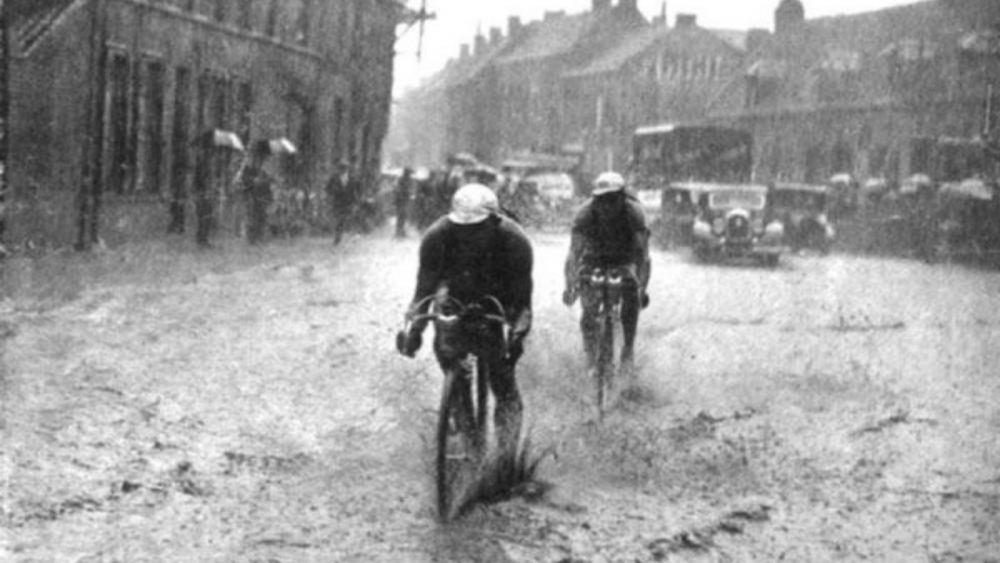
Pouring rain at the Tour de France 1936
The first stage of Tour de France in 1936 run in pouring rain.
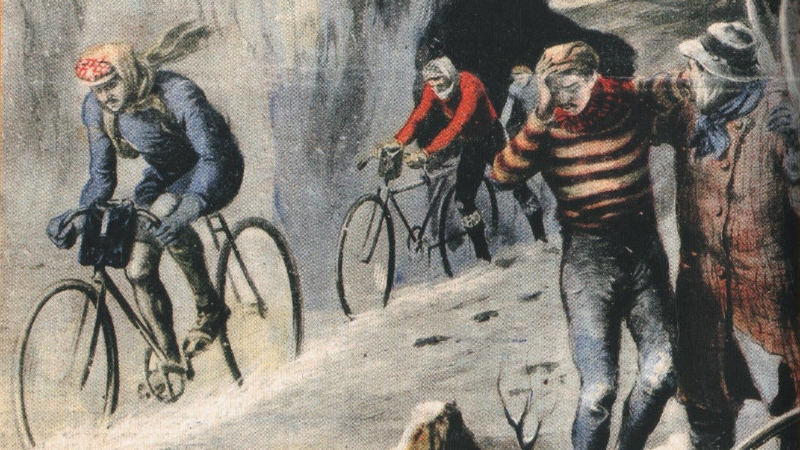
Only four riders finished the thoughest Milano-Sanremo edition
Heavy snowfall often determinates the outcome of a road cycling race during early springtime. But even among the stories about the heroic efforts of struggling through the otherwise beautiful white obstacle the 4th edition of Milano-Sanremo (held on 4th April 1910) has its own legendary place. This was the race that only four riders finished. … Read more
André Leducq was one of the biggest cycling stars in the 1920’s and 1930’s.
There are plenty of intestring posts also on this topic. Pick one:
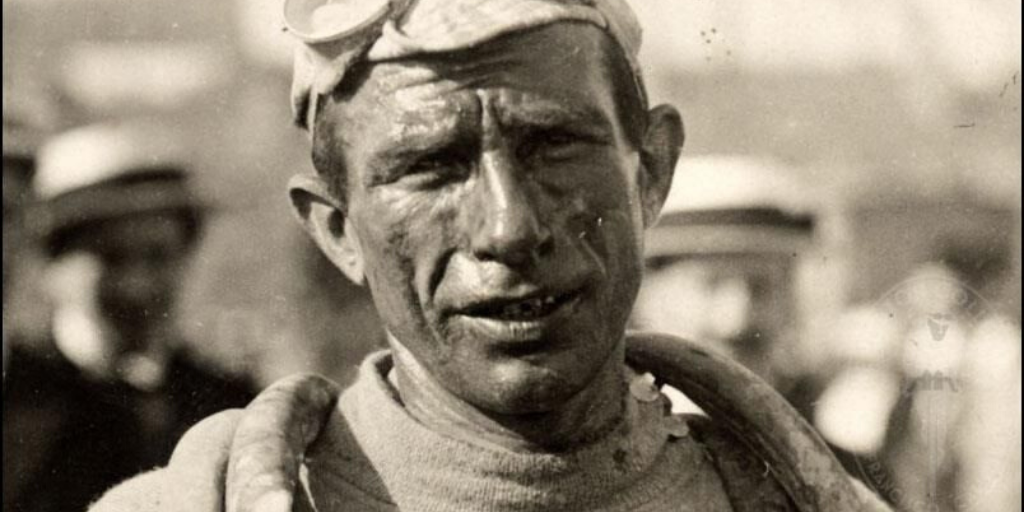
Mini Cycling Who’s Who: Firmin Lambot
The oldest Tour de France winner ever, Firmin Lambot was born in Florennes (Belgium) in 1886. Like many of his contemporaries, Lambot used his bicycle to ride to work since his age of 17. When he won his first bike race, he bought a racing bicycle from the prize.He turned professional in 1908 and attended … Read more
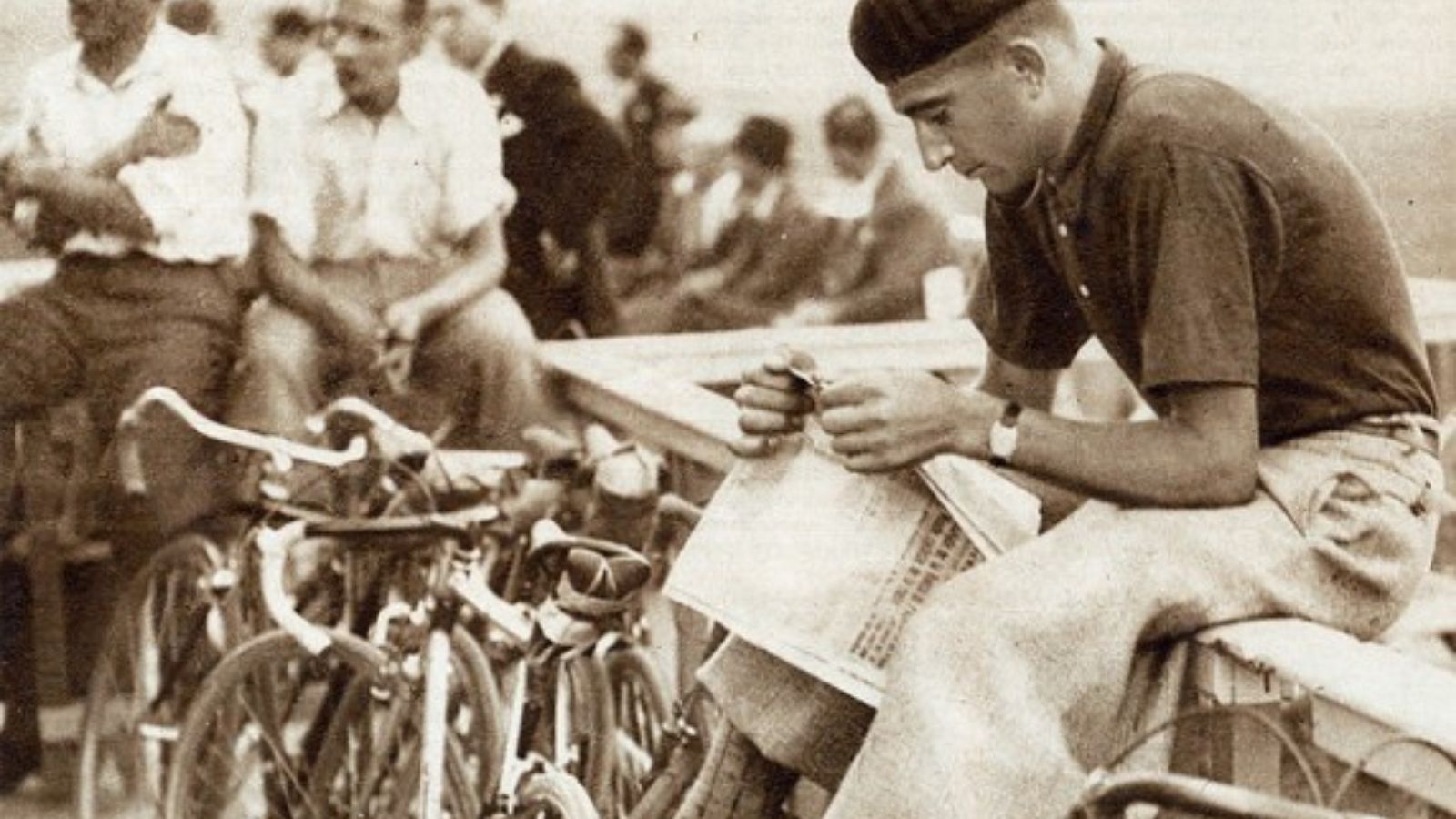
Mini Cycling Who’s Who: Antonin Magne
Antonin Magne, the two-time winner of the Tour de France was born on the 15th of February 1904 in Ytrac, France. He attended the Tour de France first in 1927. In 1931 André Leducq, the defending champion was the team leader of the French squad, but he was out of shape, so Magne became the … Read more
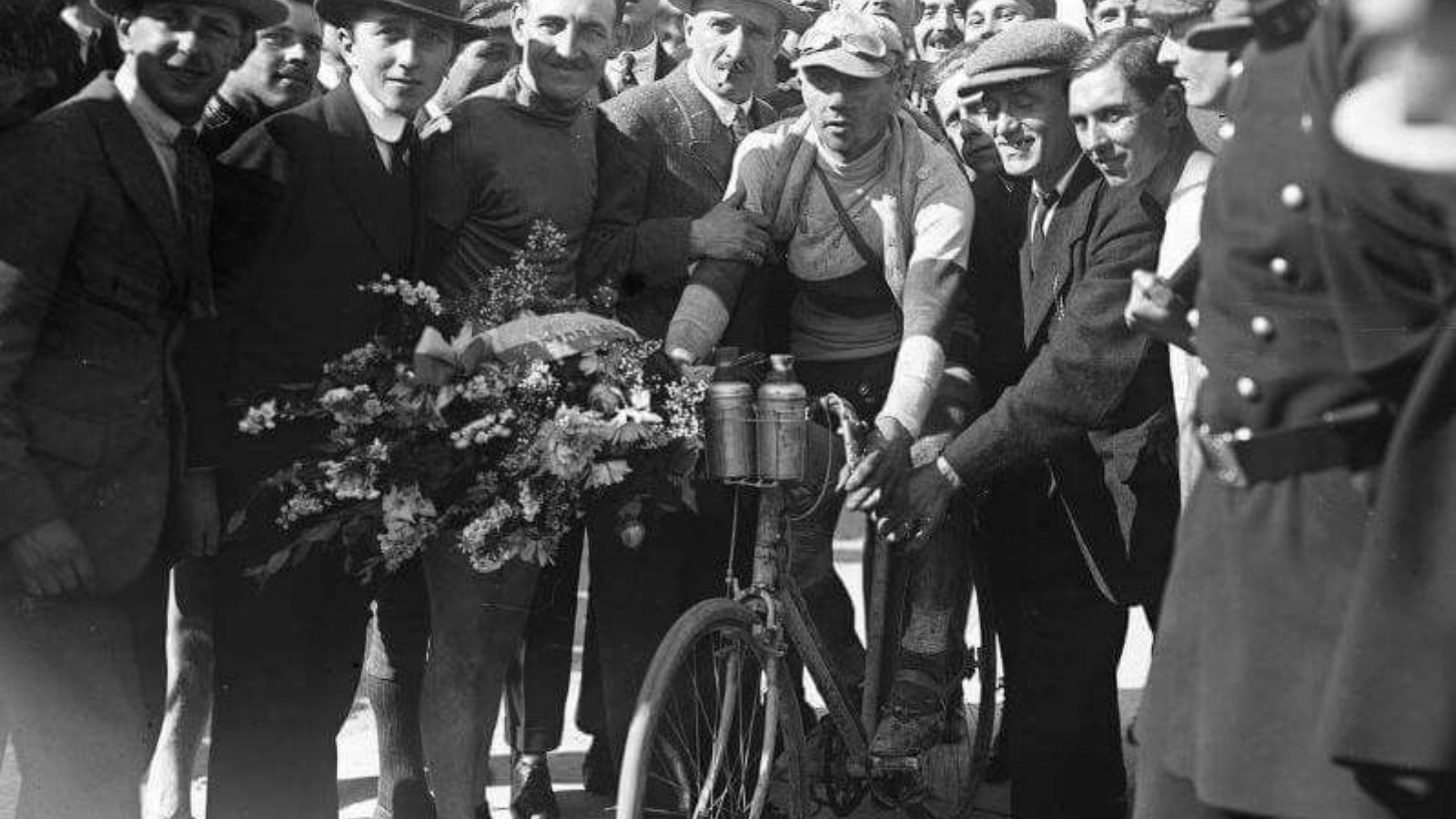
Faces from the peloton: the cyclist with a glass eye
The first decades of history of Tour de France are full with extraordinary stories. One of them is the story of the cyclist with a glass eye.Honoré Barthélémy (1891-1964) crashed badly on the 8th stage (Perpignan- Aix-en-Provence, 325 km) of Tour de France in 1920. Despite having problems with his sight, he mounted his bike … Read more
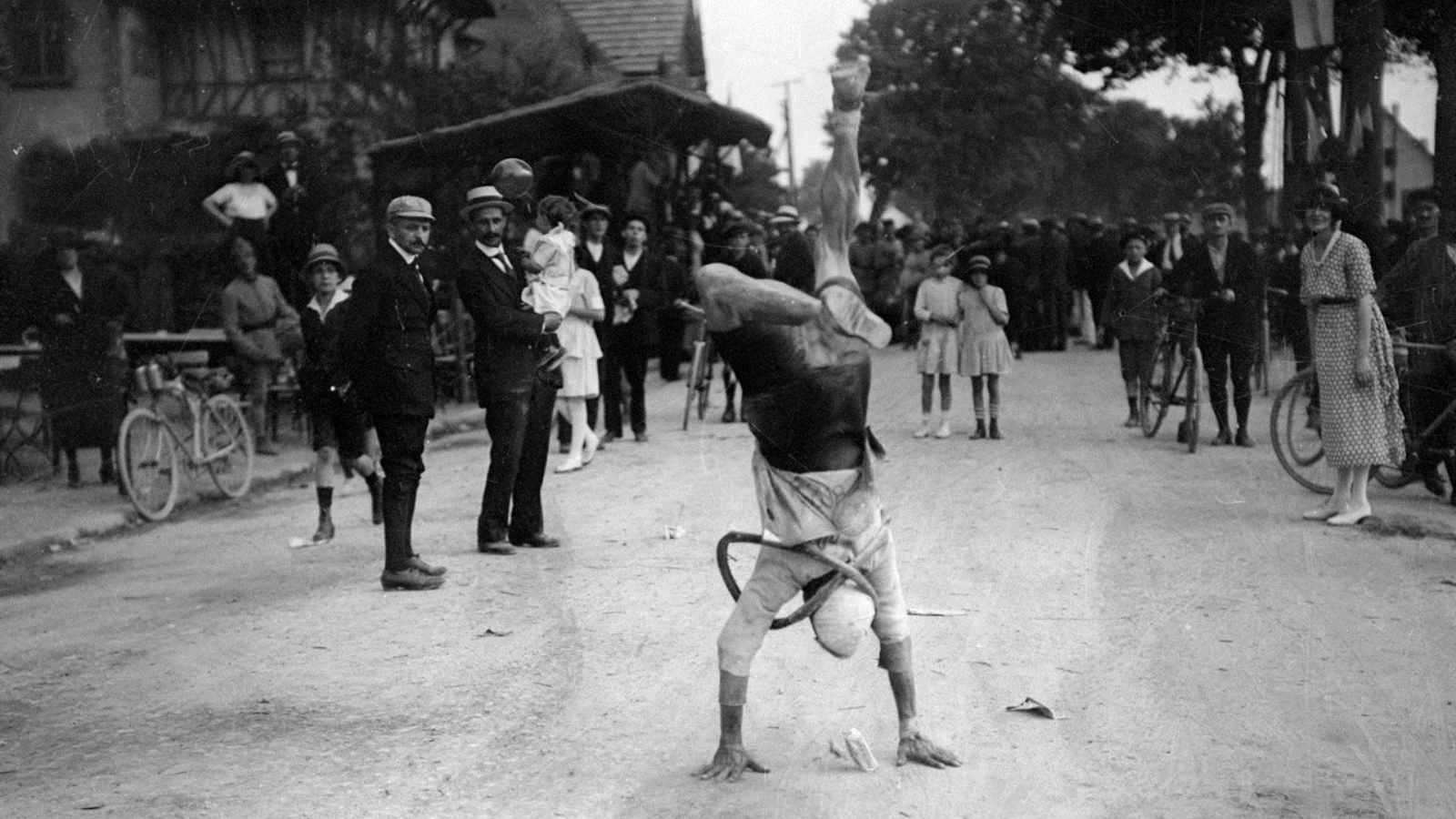
Faces from the peloton: Jules Deloffre, “the acrobat cyclist”
Undoubtedly, there were plenty of cyclists with unique stories in the peloton in the first few decades of road cycling races. These atlethes were not necessarily successful riders or didn’t become the bigest stars of their days, but yet, their stories are worth to be told. Actually, if we are looking deeper into the well … Read more
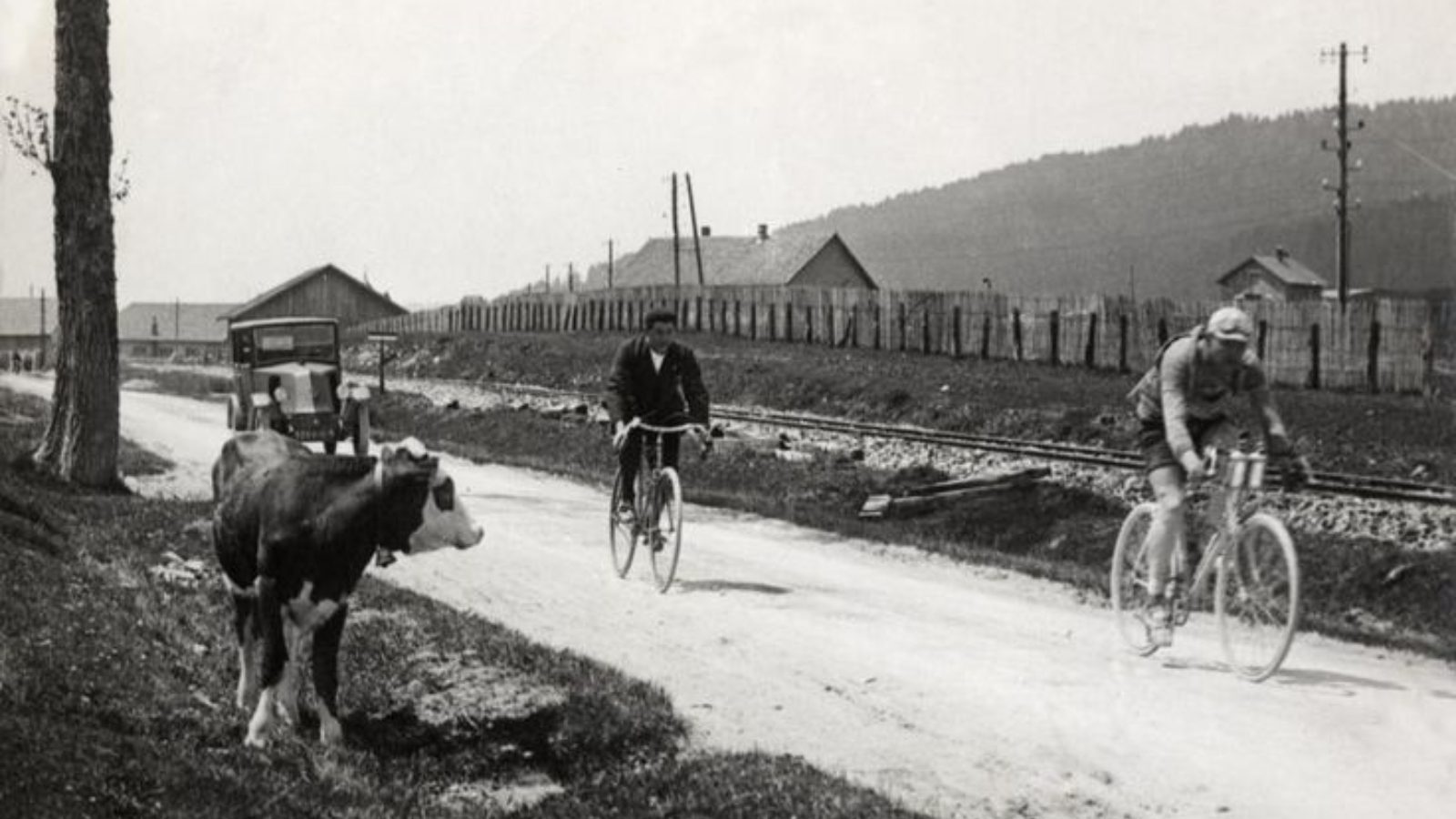
Vintage cycling image of the day: first stage of Tour de France 1926
In 1926, Tour de France started outside Paris for the very first time. In 1926, Evian, the famous high-market holiday resort and spa town on the shores of Lake Geneva, hosted the start of the first stage. It was 373 km long, finished in Mulhouse. Jules Buysse was the winner of the day. MORE TOUR … Read more
